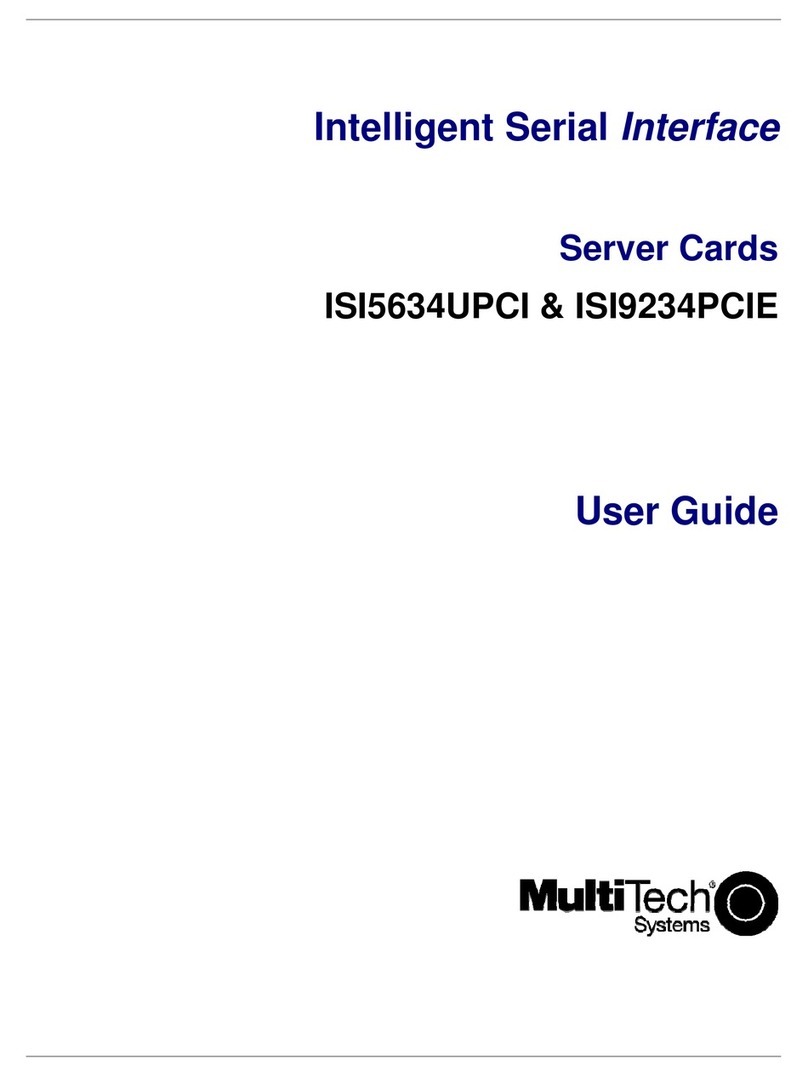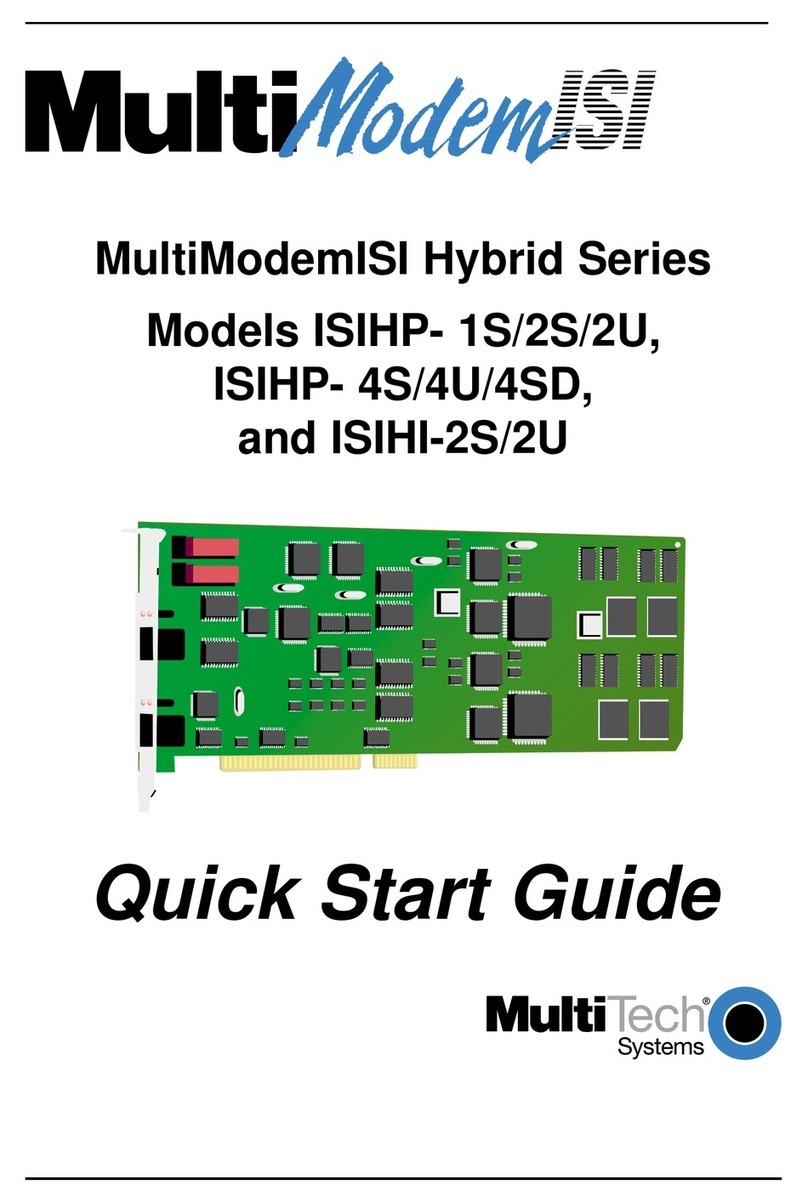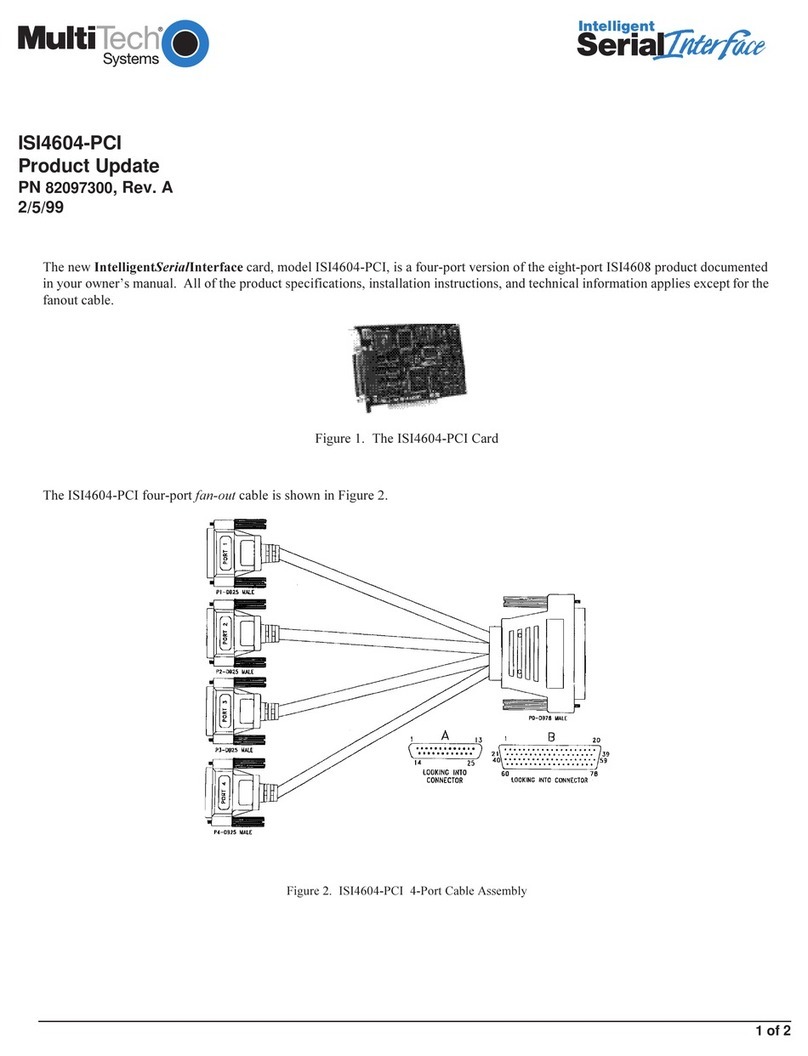
3.13 NetWare Driver Installation .................................................................. 42
3.13.1 Configuring Ports for NetWare Connect .......................................... 43
3.13.2 Removing the Driver (Novell) ............................................................ 43
3.14 SCO Open Server 5 Driver Installation ................................................ 43
3.14.1 Install from CD-ROM ......................................................................... 43
3.14.2 Format a Floppy Disk for SCO5 ........................................................ 44
3.14.3 Untar the Driver File and Copy Files to Floppy Disk ....................... 44
3.14.4 Install Driver from Floppy Disk ......................................................... 45
3.14.5 MultiTech Installation Script ............................................................. 46
3.14.7 Activating Ports in SCO Open Server 5............................................ 48
3.14.7 Removing the Driver (SCO Open Server 5) ...................................... 48
3.15 Linux Driver for Multi-Tech ISI Server Cards
(for PCI and ISA busses) ...................................................................... 49
3.15.1 LINUX: Pre-Installation Issues .......................................................... 49
3.15.2 LINUX: Copying the Driver from the Media...................................... 49
3.15.3 LINUX: Copying & Untarring the Driver from CD-ROM ................... 49
3.15.4 LINUX: Copying & untarring the driver from a floppy ...................... 49
3.15.4.1 Copying the Driver from a Floppy ................................................. 50
3.15.5 LINUX: Driver Installation and Loading ............................................ 50
3.15.6 LINUX: Setting the baud rate ............................................................ 50
3.15.7 LINUX: Verifying the ports ................................................................ 51
3.15.8 LINUX: TTY Devices Created by the Drivers: ................................... 51
3.15.8.1 Devices Mapped for Hybrid Cards (ISIHI-xx and ISIHP-xx cards):52
3.15.9 LINUX: Dial-in Configuration ............................................................ 52
3.15.10 LINUX: PPP Setup ............................................................................. 52
3.15.10. Miscellaneous................................................................................. 53
3.15.11 Removing the ISI Driver (Linux) ........................................................ 53
3.16 RedHat Linux 6.2/7.0 RPM Drivers for ISI Server Cards
(PCI bus only)....................................................................................... 54
3.16.1 LINUX-RPM: Pre-Installation Issues ................................................ 54
3.16.2 LINUX-RPM: Copying the Driver from the Media ............................ 54
3.16.3 LINUX-RPM: Copying the driver from CD-ROM .............................. 54
3.16.4 LINUX-RPM: Copying the Driver from a Floppy .............................. 54
13.16.4.1 Copying the Driver from a Floppy: ................................................ 55
3.16.5 LINUX-RPM: Verifying the ports ....................................................... 56
3.16.6 LINUX-RPM: TTY Devices Created by the Drivers .......................... 56
3.16.7 Devices Mapped for Hybrid Cards (ISIHP-xx cards): ...................... 57
3.16.8 LINUX-RPM -- Dial-in configuration: ................................................ 57
3.16.9 LINUX-RPM -- PPP setup: ................................................................ 57
3.16.9 Removing the ISI Driver (Linux-RPM) ............................................... 57
3.17 Warning About the Flashing of Terminal Adapter Ports ....................... 58
3.17.1 Firmware Update for ISIHx Terminal Adapters ................................ 58































